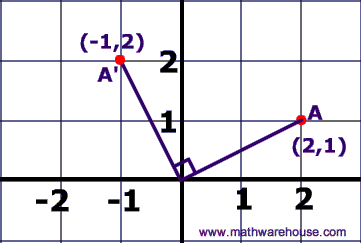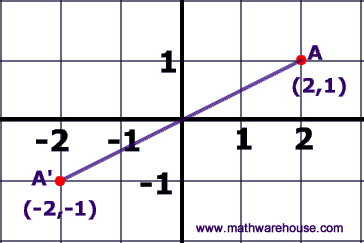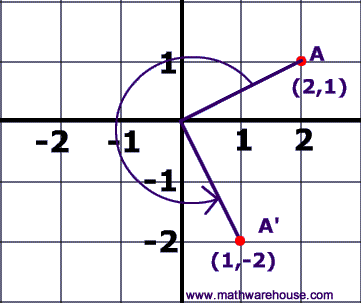Translation:
Every point is moved the same distance in the same direction.
Reflection:
Figure is flipped over a line of symmetry.
Rotation:
Figure is turned around a single point.
Dilation:
An enlargement or reduction in size of an image.
TRANSLATION:
Definition: A translation (notation  ) is a transformation of the plane that slides every point of a figure the same distance in the same direction.
) is a transformation of the plane that slides every point of a figure the same distance in the same direction.

 ) is a transformation of the plane that slides every point of a figure the same distance in the same direction.
) is a transformation of the plane that slides every point of a figure the same distance in the same direction.
Translations in the Coordinate Plane:
In the example below, notice how each vertex moves the same distance
in the same direction.
in the same direction.

In this next example, the "slide" (translation) moves the figure
7 units to the left and 3 units down.
7 units to the left and 3 units down.
DILATION
Example 1:
|
|










